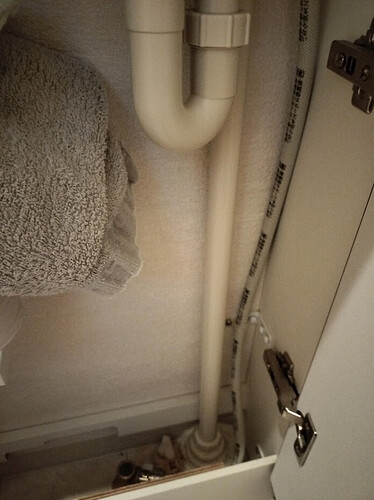Continuing my quest to see if there’s any aspect of life we don’t have a resident expert on, I’m looking at maybe doing some simple plumbing.
Our ground floor air conditioning is inadequate to dehumidify my office around 3 pm on muggy summer days, and working in 85 % humidity is no fun. So I bought a powerful stand-alone dehumidifier to complement the aircon. But, as I understand it, the typical capacity of these things means the tank needs emptying multiple times a day, and I could do without the hassle while working. It comes with a drain hose that works simply by gravity.
What I think I need to do, is cut a segment out of that pipe, and replace it with a fitting that has another inlet that I can cap when not in use, and attach the drain hose to when in use, lower than the drain hose.
Any tips, tricks, pitfalls to look out for?
Not an expert but done some plastic piping systems in a past life.
You’ll need to figure out the existing pipe size obviously to get the right fittings. I would go for a hose tail and a branch.
Avoid solvent connections, they are not too difficult to use but if you make a mess of it you’ll end up with a bigger job.
4 Likes
a suggestion: In the USA, dehumidifiers are available with a pump that pumps condensate from the tank to wherever (often, a sink above the level of the machine). It’s also possible to add a pump to a machine that didn’t come with one. That might be easier. (I assume these things exist In Japan, as gravity and dehumidifiers are the same…)
To answer the plumbing question. First I know nothing about Japanese plumbing codes or practices. But I do understand how and why plumbing is done the way it is in the USA. So I can tell you what a US plumber would do.
They would cut the vertical pipe, install a t fitting at the cut. To the t, they would attach a piece of horizontal pipe, and to that, attach a p trap. Drain hose goes into p trap, with the end of the hose above the level of the water in the trap. That keeps everything sealed angaist sewer gas backing up into the room, but the trap can dry out if the dehumidifier is not running (mine doesn’t run in winter. )
Alternatively, and superiorly, move the p trap down the vertical pipe, which would increase the length of the sink drain tailpiece. The condinsate drain gets attached to the sink drain above the trap, so there isn’t a second trap to dry out.
3 Likes
I haven’t seen any commercial Japanese dehumidifiers with pumps.
Are there any particular considerations for pumps? I’m finding it remarkably difficult to find any information or products in Japanese, I might even have to buy an import (“Little Giant”) if I go this route.
I hadn’t considered the importance of the p trap, that’s a pretty big deal.
Thanks!
